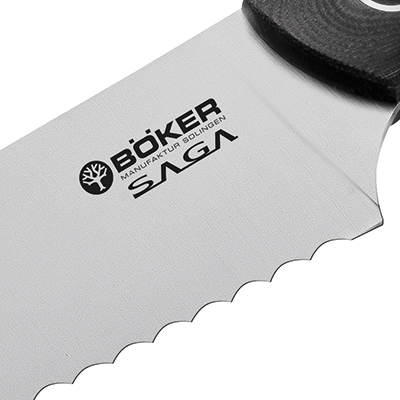Serration

 Serration is the name of the wavy grind of a knife blade used for several types of kitchen knives (e.g. bread knives) and some survival knives. Some blades have a fully serrated edge along the entire length of the blade, while others have a partially serrated edge. A serrated edge has relatively few points of contact with the cutting material.
Serration is the name of the wavy grind of a knife blade used for several types of kitchen knives (e.g. bread knives) and some survival knives. Some blades have a fully serrated edge along the entire length of the blade, while others have a partially serrated edge. A serrated edge has relatively few points of contact with the cutting material.
This means that the pressure on those points of contact is higher than the pressure of a full-contact straight edge. At the same time, the slightly curved teeth of the serrated edge touch the material at a much steeper angle than a straight edge would, thus penetrating the material much deeper. A blade with serrated edge rips more than it cuts. It doesn\'t make a straight cut right away but creates many small tears which are widened and connected into a continuous cut with repeated cutting motions. Another special feature of the serrated edge is that it increases the overall length of the edge.
The curved design of the serration ensures that the edge penetrates the material going forward and back – even when the teeth point away from the material. Due to their specific shape, serrated blades are very well suited for materials with a hard exterior and softer inside (such as crusty bread) or materials that would make a straight edge slide off (such as ropes or cables). One disadvantage of blades with a serrated edge is that the cuts are less smooth and precise than those made with a straight edge. Moreover, they cannot be sharpened on a classic whetstone, since each tooth needs to be sharpened individually.
